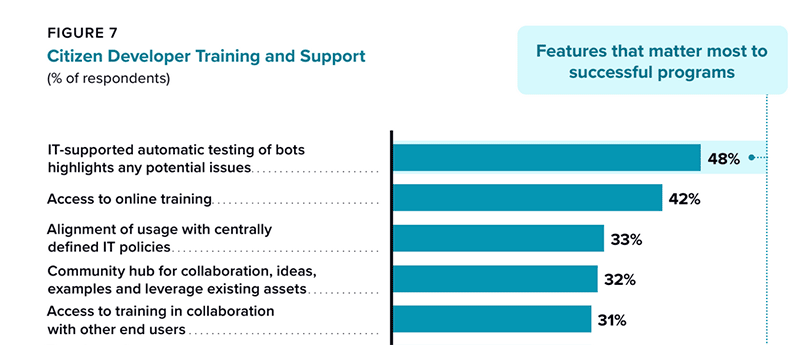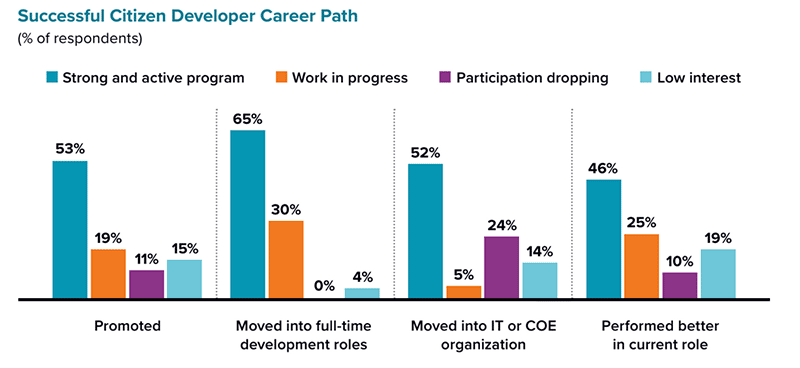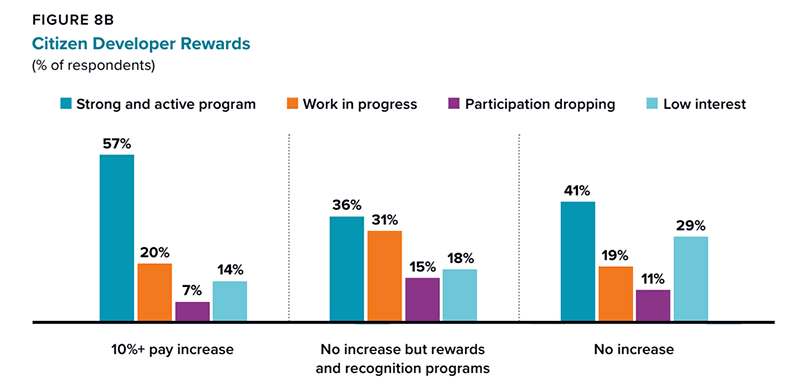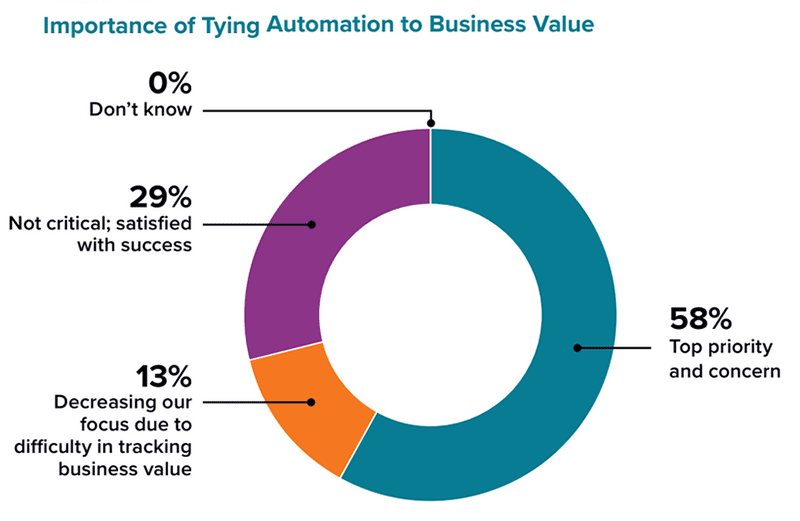No one knows the meaning of the word “overwhelmed” quite like human resources. A day in the life usually features too many tools and too many tasks—all in service of making sure every employee has what they need to do their job.
HR would welcome some efficiency, but they’re also tasked with helping other departments become more efficient. The last thing they need is more responsibilities, tools, and people to manage.
What’s an overworked and overwhelmed HR pro to do?
Enter process automation: your secret weapon for accomplishing more and helping everyone else do the same thing. Best of all, the right talent to take automation to every department is hidden in plain sight. Your current employees have the skills you need to make the most of your existing tools—you just need to empower them to automate.
First, get your HR house in order by automating your team’s processes. Then, you can take the lead on sparking automation company-wide. Here’s how.
HR’s search for greater efficiency
Inefficiency is the status quo for HR departments—manual processes and tasks consume up to 65% of HR teams’ days. Said another way, they’re only spending a third of their time on the kind of deep, meaningful work that can’t be automated.
As frustrated as you might be with your current processes and tools, resist the urge to buy all new software and start from scratch. A better approach is to work more efficiently within your existing HR tech stack, and process automation is the answer.
Efficiency through automation will deliver organizational outcomes like:
- Lower operating costs
- Improved revenue growth potential
- More satisfied customers
Our State of Process Automation in the Midmarket in 2024 report found that organizations with successful automation projects are more than twice as likely to increase their automation budget in 2024. In turn, these higher budgets often lead to a more successful automation program:

The benefits of process automation are clear. But what isn’t always so cut-and-dried is how to begin doing it. These foundational guidelines will help you start:
- Pick a relatively simple but painful process to automate first. Don’t try to boil the ocean; just choose one process.
- Lean into automation planning—document and optimize your processes before you attempt to automate them.
- Tie the results back to business value and, ideally, financial outcomes. For instance, you might automate onboarding to get sales reps in the field faster so they can pull in more revenue. Document and report the tangible outcomes of the automation.
Once you have results and ROI to show for it, you can offer your colleagues and superiors a proof of concept to fuel further automation across your department. You’re well on your way to a more streamlined and efficient HR operation.
HR helps everyone else do more, too
Optimizing and automating your own processes is one thing. But HR also plays a central role in helping every other department do their job better. How do you prioritize?
Follow the rule every flight attendant knows by heart: Put on your own oxygen mask before helping others.
In other words, start with automation for your team, then help the rest of the company get more efficient through automation. This order of operations means your HR team will be at maximum efficiency while helping other departments get to their peak efficiency.
But even with newfound efficiency in HR, your team doesn’t have the time or resources to implement automation for everyone else. Your role in facilitating company-wide efficiency is to empower other departments to embrace automation for themselves.
Why you must equip workers to automate processes on their own—and how
All too often, HR waits for IT to identify inefficient processes and then automate them—this is one of the most common process automation mistakes.
When you rely on IT to drive automation, these projects land in massive backlogs. You might see the outcomes of automation in six months, but that’s the best-case scenario. This isn’t IT’s fault, as they face tons of pressure to put out fires and fix bugs while working on strategic advancements to drive the company forward.
Process automation doesn’t demand that you further burden IT or miss out on months of efficiency while you wait for technical support. Instead, you can unlock your team’s potential and leverage the IT-savvy team members in each department of your company. These undercover experts have an inclination toward technology and efficiency, and they’d gravitate toward process automation if you equipped them with tools and training.
The broader midmarket is quickly catching on to this approach. Our research found that 48% of midmarket organizations operate programs that train business users to develop and support other technology-related activities. Another 12% plan to add a program within the next 18 months.
So, how can you find your automation champions? Incentivize department heads to identify and leverage the non-technical experts they already have on their teams to spearhead process automation. They might be a customer success person looking to automate client intake or a team leader with project management skills who can spot inefficiencies from a mile away.
These individuals are ideal to take on process automation because they:
- Get the process inside and out.
- Know the goal and ideal outcome of automation.
They know the pain of a manual process. They can envision a better way of doing things because they live the current steps every day. As they know the process inside and out, they’re also skilled documenters who can start automation planning out strong.
In short: for an HR leader looking to get efficiencies out of their team and their software, they have to start with the person who’s really good at project management and documentation right now.
Once identified, these automation all-stars need to:
- Write out every step in the process.
- Find opportunities to optimize by removing steps or aligning data sources.
- Use the right tools to execute automation.
The human resources department shouldn’t be the boots on the ground implementing process automation for these teams. But by incentivizing and encouraging leaders to find the right people to automate on their teams, HR plants the seeds of automation and efficiency everywhere.
How HR can enable organization-wide automation success
At this point, you should have a growing network of automation pros ready to drive efficiency in every corner of the company. From there, HR does what they do best: train, develop, and empower employees to grow.
What sets apart successful automation training programs? Our research found that team-building and 1:1 interactions with experts, along with strong career paths, are key elements—all of which HR can help to deploy. Here are five ways to build a successful program.
1. Train non-technical talent
In our State of Automation Report, respondents shared that training is a key feature of successful programs. Just under half (42%) cited access to online training—the second most popular feature of successful programs—and 31% cited training in collaboration with other users.

Teach them how to use process automation tools, and share best practices for success. You can draw on your department’s firsthand experiences with process automation, while also seeking opportunities to get them in touch with IT experts, whether through live interactions or recorded training.
2. Carve a career path
Employees want to know that a new skill set or training is setting them up for something else—their next role, a promotion, or even a whole new career trajectory. This extends to process automation, too.
Our data found that the most successful programs for training non-technical talent support a promotional path:

Don’t just train non-technical talent in process automation for a project’s or department’s sake. Show them it’s mutually beneficial by carving career growth opportunities into your program. Clear paths to professional growth encourage participation and lead to a higher likelihood that the program will be successful.
3. Offer financial rewards
Too many professionals know the pain of a dry promotion—getting more responsibility without being paid for it. Don’t doom your automation efforts this way. Attach the training and responsibilities of process automation to compensation.
“A career path is not just saying ‘Congratulations, you get more work to do every day.’” — Ryan Bazler, Senior Director of Product Marketing, Nintex
Our research found that programs for training non-technical talent that increased pay by 10% or more were much more likely to be strong and active than those that didn’t increase pay.

Compensation increases don’t just boost automation success. Pay and benefits are still the single most common reason employees leave companies, according to Gallup. So when you compensate your tech-savvy leadership and ops talent for their automation efforts, you’ll boost employee satisfaction and retention, too.
4. Create a hub for community and mentorship
Automation success is often forged in community: A third (32%) of respondents to our survey cited a community hub for collaboration as a critical feature of successful automation training programs for non-technical talent.
HR can build this network of automation champions across the organization to spark knowledge sharing and mutual support. This group might not be huge (probably five to 10 people within mid-market organizations) but any community of like-minded people can be valuable.
Mentorship was also a predictor of program success—one-on-one relationships with experts play a critical role in encouraging automation efforts.
Although mentorship might be too heavy a lift for HR to tackle, you don’t have to take full responsibility for these pairings. For instance, you can facilitate a structured knowledge group for employees who are running automation projects within departments to exchange best practices. Encourage gamification within this group to inspire friendly competition, spark goal-setting, and take automation further.
Knowledge sharing goes a long way to help automation folks build each other up.
5. Show employees how to quantify results
The most successful automation projects and programs connect their results to business goals: More than half (58%) of respondents cited tying automation to tangible business value as a top concern. To get even more specific, consistently successful programs are more likely to regularly tie automation to financial performance.

This spells an opportunity for HR to fuel automation success by training non-technical talent to not just implement automation but also quantify their results and prove ROI. Show them which factors to look for and what to document before and after automation. That way, they can come back to their leadership with real-time results like time saved and revenue driven. Tangible automation results turn into more budget and resources for automation.
Gain more from what you’ve already got
Making the most of your current resources, tools, and teams doesn’t have to be a source of stress. It can be a positive vision for a more productive and efficient future—one that HR can help bring to life.
HR does a little bit of everything, but you don’t have to do it all. Enable automation, rather than executing it, and watch every team in your organization thrive.
From HR to every department in your organization, Nintex can help you fast-forward your workflows. Whatever outcomes you want from process automation, our technology drives savings and efficiency with solutions for every team and department. Let’s chat.







